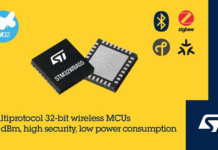
According to a new research report pertaining to the wide band gap semiconductor market, the global wide band gap semiconductor market is expected to reach a value of US$ 3 Bn by 2027, expanding at a CAGR of ~22% from 2019 to2027. According to the report, the global wide band gap semiconductor market would continue to be influenced by a range of macroeconomic and market-specific factors during the forecast period.
Rise in Demand for Power Semiconductor Devices to Drive Wide Band Gap Semiconductor Market
· The use of wide band gap (WBG) semiconductors makes power semiconductor devices smaller, quicker, and more reliable and efficient than other semiconductor materials available in the market. Advantages such as lightweight, longer life cycle, and greater energy band gap offered by wide band gap semiconductor materials make their use preferable in different types of power semiconductor devices across the globe.
· Wide commercial availability, decline in the prices of WBG semiconductor power devices, and increasing demand for gallium nitride (GaN) and silicon carbide (SiC) power devices for use in applications such as telecom equipment, computers, military devices, electric vehicles, and photovoltaic inverters, are anticipated to drive the global wide band gap semiconductor market in the near future.
· Increase in investments in wide band gap semiconductor materials and their adoption in the power semiconductor industry are anticipated to boost the global wide band gap semiconductor market during the forecast period.
Energy & Utility End-use Industry to Account for Leading Share
· The report offers detailed segmentation of the global wide band gap semiconductor market: in terms of material (silicon carbide [SiC], gallium nitride [GaN], diamond, and others), application (hybrid/electric vehicles, PV inverters, railway traction, wind turbines, power supplies, motor drives, UPS, and others), and end-use industry (automotive, aerospace & defense, IT & consumer, energy & utility, and others). The global market has also been segmented based on region (North America, Europe, Asia Pacific, South America, and Middle East & Africa).
· Among the materials, the silicon carbide (SiC) segment accounted for a leading share of the global wide band gap semiconductor market in 2018. The segment is anticipated to maintain its dominance of the global wide band gap semiconductor market during the forecast period.
· The hybrid/electrical vehicles application segment is expected to lead the global wide band gap semiconductor market and expand at a high CAGR during the forecast period.
· Energy & utility is a highly attractive end-use industry segment of the global wide band gap semiconductor market. It is the largest segment in terms of market size. The segment is anticipated to expand at a rapid rate during the forecast period. Additionally, rise in the procurement of wide band gap semiconductor materials by different power semiconductor manufacturers is anticipated to drive the global wide band gap semiconductor market during the forecast period.
Asia Pacific a Highly Lucrative Wide Band Gap Semiconductor Market
· Asia Pacific is expected to hold the maximum share of the global wide band gap semiconductor market during the forecast period, owing to the early adoption of wide band gap semiconductors in the region. Asia Pacific and North America account for a considerable market share. These regions are projected to provide lucrative opportunities to the wide band gap semiconductor market during the forecast period.
· China dominated the wide band gap semiconductor market in Asia Pacific in 2018. The wide band gap semiconductor market in the country is expected to expand at a prominent CAGR during 2019 to 2027. Different government organizations across Asia Pacific are increasing their spending on research & development for advanced power semiconductor devices. This, in turn, is expected to boost the wide band gap semiconductor market in the region. Moreover, rise in the demand for electric vehicles and high interest for 5G supported devices are some of the major drivers that are likely to propel the wide band gap semiconductor market during the forecast period.
Investments in Development of New Products to Fuel Wide Band Gap Semiconductor Market
The report provides the profiles of leading players operating in the global wide band gap semiconductor market. These are Cree, Inc., GeneSiC Semiconductor Inc., Infineon Technologies AG, Panasonic Corporation, ST Microelectronics N.V., ON Semiconductor, ROHM Semiconductor, OSRAM Opto Semiconductors GmbH, TT Electronics, Qorvo, Inc., and Broadcom Inc.
· ROHM Semiconductor is a leading manufacturer of wide band gap semiconductor (SiC and GaN) materials. It started the mass production of SiC power components such as SiC Schottky diodes and SiC planer MOSFETs in2010. In February 2019, the company announced plans to upgrade its existing production facility for WBG semiconductors with the help of advanced machines, expected to be completed by the end of 2020.
· InAugust 2019, ON Semiconductor introduced a wide band gap (WBG) silicon-carbon (SiC) MOSFET in its product line. The company expects that the new product would witness high demand in the near future, due to rise in the use of WBG semiconductor devices in applications such as automotive electric systems and electric vehicles.
These insights are based on a report on Wide Band Gap Semiconductor Market by Transparency Market Research.
















